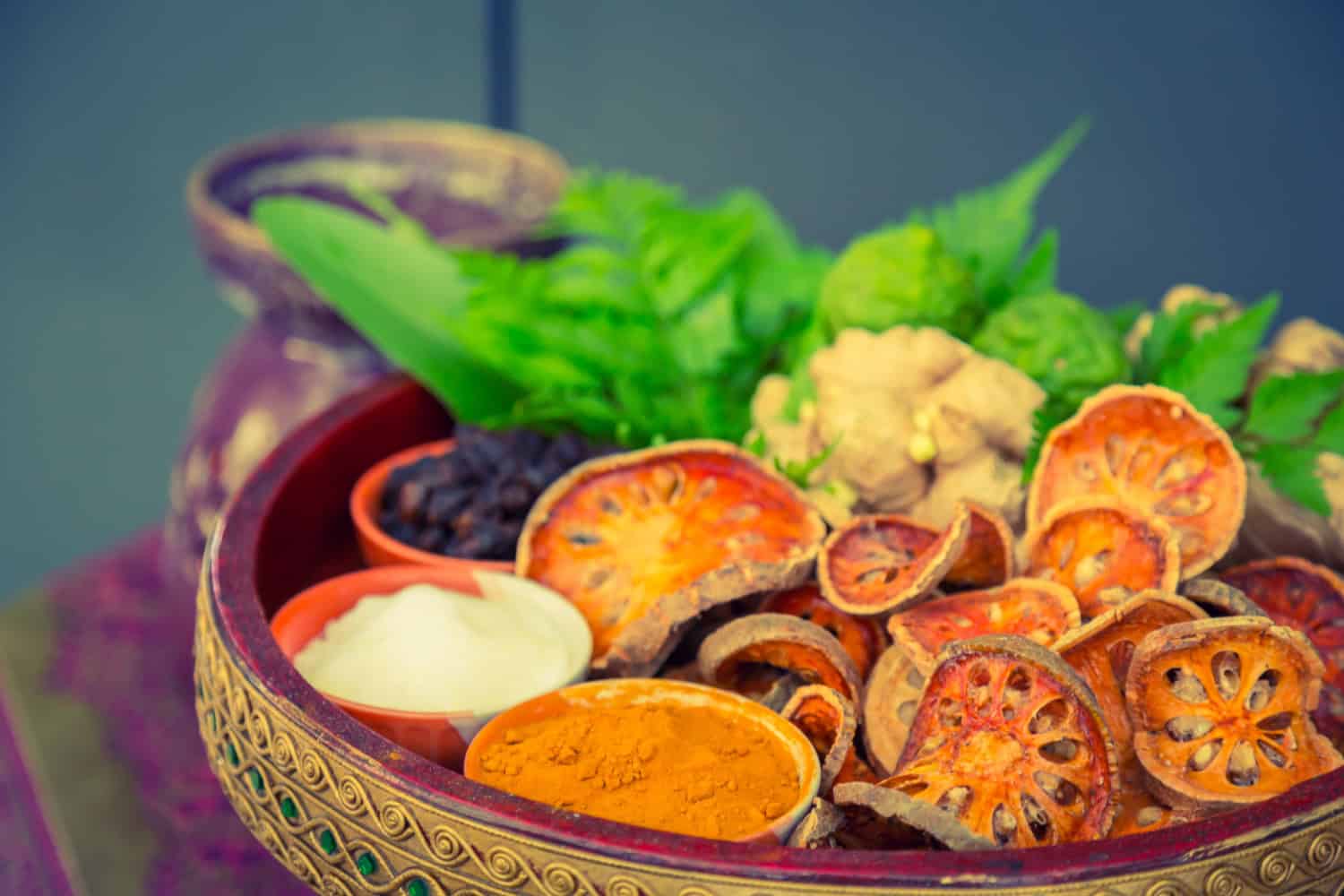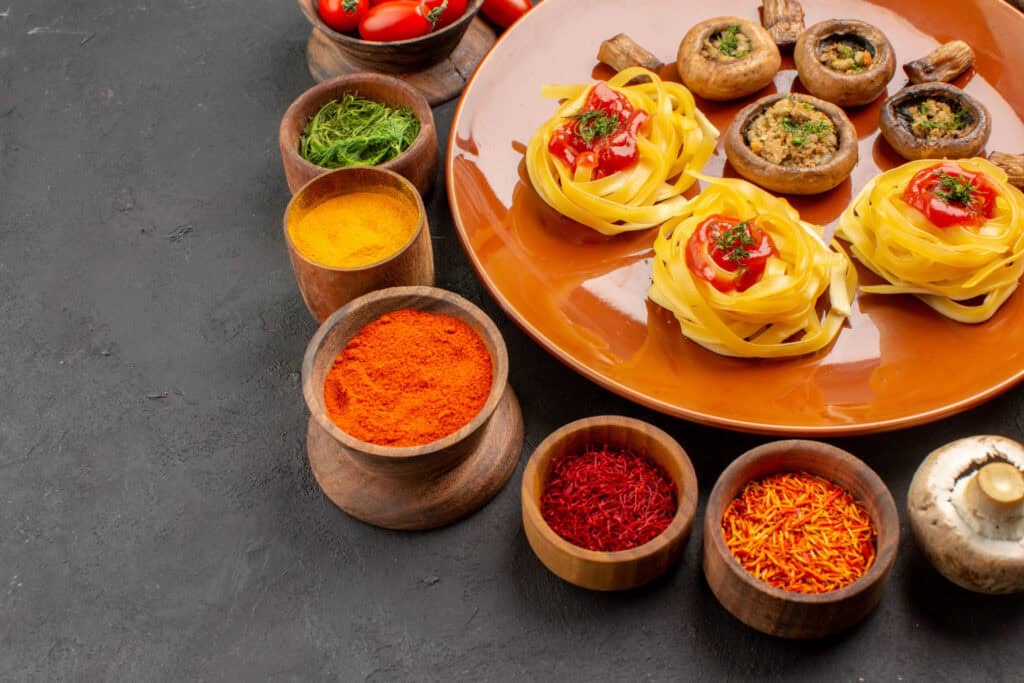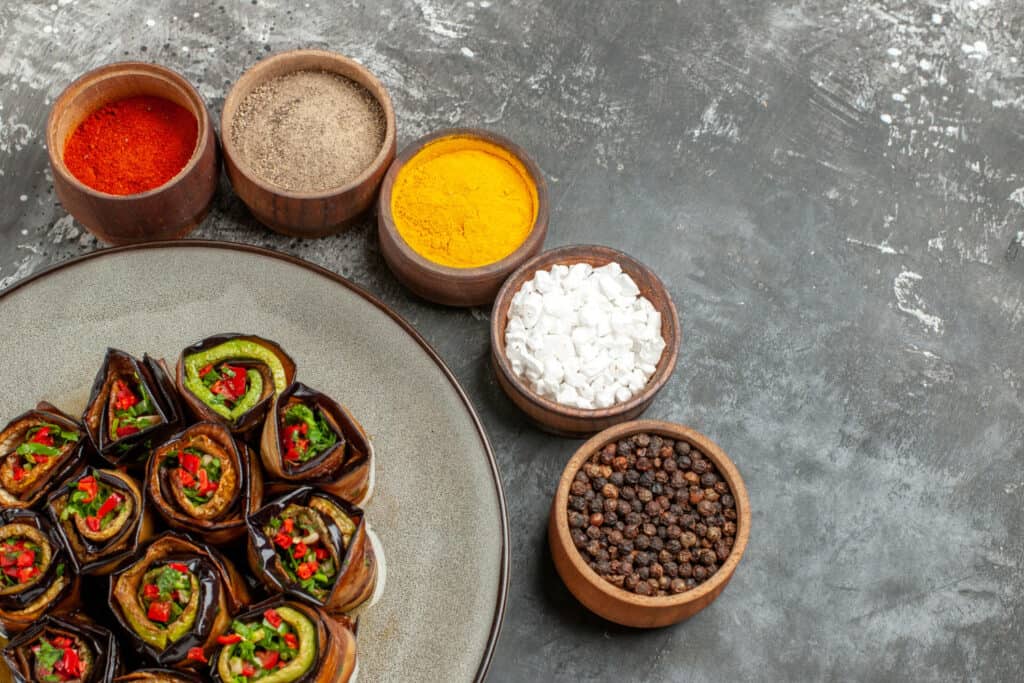
By Jermaine Thomas February 5, 2025
Food has consistently played a crucial role in defining cultural identity. From the aromatic spices of Indian cooking to the subtle tastes of Japanese sushi, classic meals showcase history, geography, and tradition. In contemporary catering, integrating cultural flavors provides a new perspective on event dining. It delivers genuine flavors and a sense of nostalgia while catering to various tastes. Incorporating traditional tastes into catering goes beyond merely reproducing classic recipes. It involves merging tradition with current culinary trends, creating dishes that honor the past while welcoming modern flavors.
The Significance of Cultural Catering
Catering is more than just serving food—it’s about storytelling. Cultural catering takes guests on a journey, offering a taste of different regions and traditions. Whether it’s a wedding, corporate event, or celebration, authentic flavors make occasions more memorable.
The Emotional Connection
Food has the power to evoke emotions. For many, tasting a familiar dish transports them back to childhood memories or family gatherings.
By including traditional flavors in catering, hosts create a sense of warmth and nostalgia.
Expanding Culinary Horizons
Today, diners are willing to try international foods. Cultural catering exposes them to cuisines they may have never experienced, broadening their enjoyment of various tastes. Whether it’s a Moroccan tajine or a Korean barbecue feast, such experiences create unforgettable memories.

Balancing Tradition with Innovation
Modern catering doesn’t mean limiting the menu to historical recipes. Instead, it blends old and new, keeping dishes relevant while preserving their essence.
Fusion Food Ideas
Fusion cuisine is a creative way to honor tradition while adding a contemporary twist. Here are a few fusion food ideas that blend heritage with modern tastes:
- Sushi Tacos: A combination of Japanese sushi elements with Mexican tortillas, featuring fresh sashimi and wasabi-infused guacamole.
- Tandoori Pizza: A mix of Indian and Italian flavors, topped with spiced tandoori chicken, yogurt drizzle, and cilantro.
- Kimchi Quesadillas: A unique take on Mexican quesadillas, filled with melted cheese and spicy Korean kimchi.
- Matcha Cheesecake: Traditional New York cheesecake infused with Japanese matcha for a vibrant, earthy flavor.
- Coconut Lemongrass Risotto: A blend of Thai and Italian cuisine, using creamy risotto infused with lemongrass and coconut milk.
Respecting Authenticity
Although fusion cuisine is thrilling, it’s important to honor traditional tastes. The essential aspect is to maintain the integrity of cultural dishes instead of weakening them. Utilizing genuine spices, cooking techniques, and components guarantees that meals maintain their true richness and intricacy.
The Role of Storytelling in Cultural Catering
Food is not just about nourishment; it is a narrative woven through generations. Cultural catering thrives when it tells a story, connecting diners to the roots of a dish. Storytelling in catering brings an event to life, offering context to flavors and ingredients.
For example, when serving an Italian wedding feast, a caterer might explain the significance of certain dishes, such as the classic sugared almonds, symbolizing the bittersweet nature of marriage.
Similarly, a Middle Eastern menu can highlight how dishes like hummus and shawarma have been shared across families for centuries, fostering unity and hospitality.
Interactive storytelling elements—such as chef-led introductions, printed narratives on menus, or digital QR codes linking to historical insights—can enhance the guest experience. A dish’s journey, from its origins to its present-day evolution, adds emotional value to the meal.
In addition to history, individual narratives are significant too. Certain couples integrate family recipes into their wedding menus, whereas corporate gatherings may showcase a company’s cultural diversity through their food selections.
Cultural catering enriches menus with significance, turning meals from mere nourishment into profound experiences, thereby enhancing the engagement and memorability of events.
How Cultural Catering Enhances Guest Engagement
A well-crafted cultural menu doesn’t just feed guests—it invites them into an experience. When events feature cultural catering, they offer guests an opportunity to engage with different traditions, flavors, and dining customs in a more immersive way.
One of the best ways to foster engagement is through interactive food stations. Imagine a dim sum station where guests can watch dumplings being freshly made, or a Mexican taco bar where they can choose from a variety of salsas and toppings. These elements encourage participation, making the dining experience lively and memorable.
Another approach is via practical experiences such as DIY sushi rolling, Ethiopian coffee ceremonies, or Middle Eastern mezze platters. These experiences transform dining into a cultural journey, igniting curiosity and discussions among visitors.
Presentation of dishes also contributes to engagement. Presenting food in traditional styles, like using banana leaf platters for South Indian dishes or clay pots for Moroccan tagines, adds to the authenticity.
Cultural catering enhances the event experience by integrating aspects of play, education, and tradition. Visitors leave not only pleased but also with a greater understanding of varied culinary traditions.
The Business Advantage of Offering Cultural Catering
For catering businesses, incorporating cultural flavors is not just a culinary choice—it’s a strategic move that broadens market appeal. As food trends shift towards authenticity and diversity, caterers who specialize in cultural cuisine gain a competitive edge.
One of the biggest advantages is differentiation. Many clients seek catering services that provide more than standard menus. Offering regional specialties, fusion food, or culturally significant meals makes a business stand out.
For example, a catering service that excels in Caribbean or African cuisine may attract niche markets that value authentic representation.
An additional advantage is customer loyalty. Individuals frequently establish a strong bond with cuisine from their background. A caterer who honors and genuinely presents those flavors creates deep emotional bonds with clients. Weddings, spiritual ceremonies, and corporate inclusivity events often look for culturally sensitive menus.
Cultural catering also enhances marketing efforts. Social media flourishes with eye-catching, one-of-a-kind meals. An artfully arranged sushi platter or a vividly seasoned Moroccan meal captures online interest, enhancing brand exposure.
By adopting cultural catering, companies not only respect traditions but also portray themselves as creative and inclusive, thereby becoming the favored option for varied and vibrant events.
Traditional Flavors from Around the World
Each culture brings something special to the table. Understanding traditional flavors helps caterers craft menus that honor heritage while delighting guests.
Asian Influences
- China: The balance of sweet, sour, salty, and umami flavors is central to Chinese cuisine. Popular choices include Peking duck, dim sum, and Sichuan hot pot.
- India: Indian cuisine is known for its aromatic spices and rich flavors. Dishes like butter chicken, paneer tikka, and biryani are always crowd-pleasers.
- Japan: Minimalism and freshness define Japanese food. Sushi, miso soup, and tempura are simple yet sophisticated offerings.
European Classics
- Italy: Italian cuisine revolves around fresh ingredients and bold flavors. Classics like pasta, risotto, and antipasti platters are perfect for catering.
- France: French cuisine focuses on technique and flavor. Quiche, coq au vin, and crème brûlée are elegant choices for events.
- Spain: Tapas-style dining is ideal for gatherings. Paella, patatas bravas, and churros bring vibrancy to the menu.
Middle Eastern and African Flavors
- Lebanon: Lebanese food offers bold, fresh flavors. Hummus, falafel, and shawarma are staple dishes.
- Morocco: Moroccan cuisine features aromatic spices and slow-cooked dishes like tagine and couscous.
- Ethiopia: Ethiopian food is known for its communal dining style. Injera, doro wat, and lentil stews provide depth and variety.
Latin American Delights
- Mexico: Bold and spicy, Mexican food includes tacos, tamales, and mole sauces.
- Brazil: Brazilian cuisine is meat-heavy, with feijoada and churrasco being highlights.
- Peru: Peruvian food combines indigenous and European influences. Ceviche and lomo saltado showcase its diversity.
Challenges in Cultural Catering
Bringing cultural flavors into catering comes with challenges. Understanding ingredient availability, dietary restrictions, and presentation methods is essential.
Ingredient Sourcing
Certain traditional ingredients are hard to find. Caterers need to locate trustworthy suppliers or discover quality alternatives without sacrificing authenticity.
Dietary Considerations
Cultural dishes often have ingredients that may not suit all guests. Offering variations, such as vegetarian, vegan, or gluten-free options, ensures inclusivity.
Presentation Styles
Although certain cuisines prioritize shared meals, others concentrate on personal portions. Adjusting conventional presentations to align with catering logistics is essential.

The Future of Cultural Catering
Cultural catering is growing in popularity. With increasing interest in global cuisines, caterers must stay innovative while respecting tradition.
Sustainability in Cultural Cuisine
Using locally sourced ingredients and reducing food waste are in line with current sustainability trends. Caterers that embrace sustainable methods attract environmentally conscious clients.
Technology and Catering
Advancements in food technology enable caterers to experiment with flavors and techniques. Virtual cooking classes, AI-generated menu suggestions, and 3D food printing are reshaping how cultural dishes are presented.
Personalized Experiences
Increasingly, clients are looking for personalized dining experiences. Cultural catering is adapting to various tastes, whether through the inclusion of family recipes or by providing interactive food stations.
Conclusion
Incorporating cultural tastes into catering produces unforgettable experiences. By blending fusion cuisine with traditional dishes, honoring customs and welcoming innovation results in exceptional culinary achievements.
By grasping cultural subtleties, obtaining genuine ingredients, and adjusting to contemporary trends, caterers can create menus that honor tradition and unite individuals through cuisine.